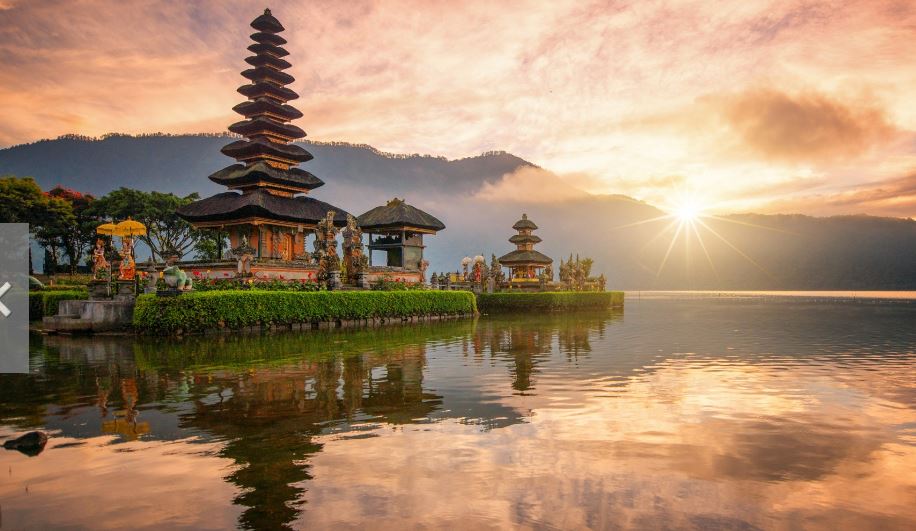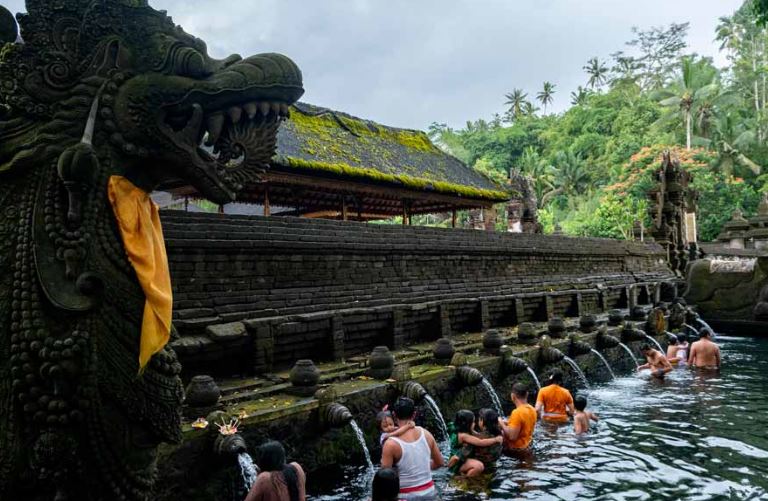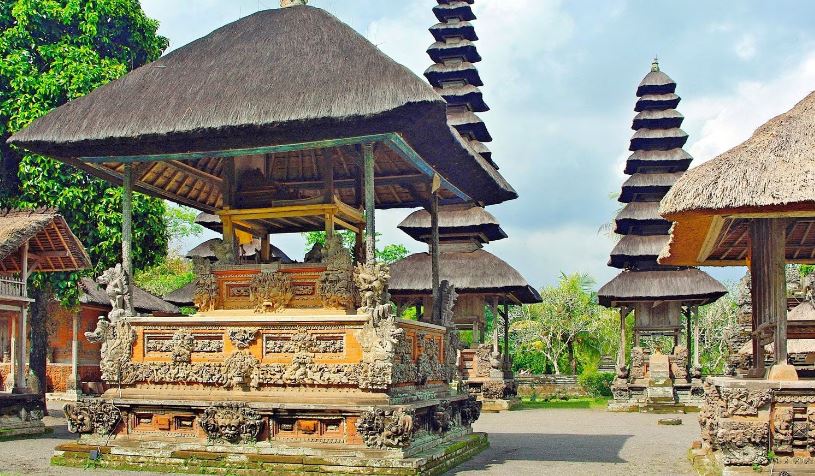Bali’s temples offer a window into the island’s rich cultural and spiritual heritage. Each temple, with its unique history, architecture, and setting, provides a deeper understanding of the Balinese way of life and their profound connection to the divine. As you explore these sacred sites, take the time to appreciate the intricate details, serene environments, and the stories that have shaped Bali’s spiritual landscape. Whether you’re seeking spiritual enlightenment, historical insight, or simply a moment of peace, Bali’s temples are sure to leave a lasting impression.
the island’s temples stand out as awe-inspiring symbols of Balinese heritage and devotion. Scattered across the island, these temples not only serve as places of worship but also as stunning landmarks that draw visitors from around the world.
Picture walking through intricately carved gates into a serene courtyard, where the scent of incense fills the air and offerings of colorful flowers are placed with reverence. Each temple has its own unique charm, history, and significance, reflecting the deep spirituality of the Balinese people.
This will introduce you to some of Bali’s most iconic and beautiful temples. We will explore their history, cultural significance, architectural features, and practical tips for visiting. Whether you’re a history buff, a cultural enthusiast, or simply looking to experience the island’s spiritual side, Bali’s temples offer a captivating journey into the heart of Balinese culture.
Join us as we delve into the mystique of Bali’s temples, where every shrine tells a story and every corner reveals a piece of the island’s rich spiritual tapestry. Welcome to a world of sacred beauty and timeless tradition. Let’s begin our exploration of Bali’s enchanting temples.

Pura Ulun Danu Beratan: A Better Way To Visit Bali’s Floating Temple

Pura Tirta Empul: A Full Guide to Bali’s Holy Spring Temple
1. Pura Besakih (Mother Temple)
Location
- Mount Agung, East Bali: Pura Besakih, also known as the Mother Temple, is located on the slopes of Mount Agung, Bali’s highest volcano.
History and Significance
- Spiritual Center: As the largest and holiest temple complex on the island, Pura Besakih is considered the spiritual heart of Bali. It dates back over a thousand years and consists of 23 separate temples.
- Cultural Importance: It is a pilgrimage site for Balinese Hindus and hosts numerous important religious ceremonies throughout the year.
What to Expect
- Architectural Grandeur: The temple complex features majestic stone gateways, tiered pagodas (known as Meru towers), and intricate carvings.
- Panoramic Views: Located at an altitude of 1,000 meters, Pura Besakih offers breathtaking views of the surrounding countryside and the towering Mount Agung.
Tips
- Respectful Attire: Wear a sarong and sash, which can often be rented at the entrance. Be prepared for occasional ceremonies that might restrict access to certain areas.
2. Tanah Lot
Location
- Tabanan, West Bali: Tanah Lot is situated on a rocky outcrop along Bali’s southwest coast.
History and Significance
- Ocean Temple: This iconic sea temple is one of Bali’s most photographed sites and plays a significant role in Balinese mythology.
- Cultural Landmark: Tanah Lot is believed to be guarded by sea snakes and is dedicated to the sea gods.
What to Expect
- Stunning Sunsets: Tanah Lot is famous for its spectacular sunset views, where the temple silhouette creates a picturesque scene against the ocean backdrop.
- Cultural Performances: Visitors can enjoy traditional Balinese dance performances in the nearby cultural park.
Tips
- Tide Timings: Visit during low tide to walk to the temple base. High tide covers the causeway, making the temple appear as if floating on water.
3. Uluwatu Temple (Pura Luhur Uluwatu)
Location
- Uluwatu, South Bali: Perched on a cliff edge in the southwestern tip of Bali, Uluwatu Temple offers dramatic ocean views.
History and Significance
- Clifftop Sanctuary: This ancient sea temple is one of Bali’s six key directional temples, meant to protect the island from evil spirits.
- Cultural Importance: Uluwatu Temple is known for its traditional Kecak dance performances held at sunset.
What to Expect
- Breathtaking Views: The temple sits 70 meters above sea level, providing stunning views of the Indian Ocean and the coastline.
- Wild Monkeys: The temple grounds are home to a troop of monkeys, known for their playful antics.
Tips
- Secure Belongings: Be mindful of the monkeys, who are known to snatch loose items like sunglasses and hats.
- Kecak Dance: Arrive early to secure a good spot for the evening Kecak dance performance, which is a highlight of any visit.
4. Pura Ulun Danu Bratan
Location
- Lake Bratan, Bedugul: Located on the shores of Lake Bratan in the central highlands, Pura Ulun Danu Bratan is a water temple dedicated to the lake and river goddess Dewi Danu.
History and Significance
- Water Temple: This temple plays a crucial role in the local irrigation system and is a place of worship for those seeking blessings for fertility and prosperity.
- Cultural Symbol: Pura Ulun Danu Bratan is depicted on the 50,000 rupiah banknote, highlighting its importance in Balinese culture.
What to Expect
- Picturesque Setting: The temple appears to float on the lake’s surface, especially during high tide, creating a mystical and serene atmosphere.
- Beautiful Gardens: The surrounding area is adorned with well-maintained gardens and pathways, perfect for a leisurely stroll.
Tips
- Early Morning Visit: Visit early in the morning to enjoy the temple in a tranquil setting before the crowds arrive.
- Photography: Bring a camera to capture the stunning reflections of the temple on the lake’s calm waters.
5. Pura Tirta Empul
Location
- Tampaksiring, Central Bali: Pura Tirta Empul is located near the town of Tampaksiring, north of Ubud.
History and Significance
- Holy Water Temple: This temple is famous for its sacred spring water, which Balinese Hindus believe has purifying properties.
- Historical Roots: The temple dates back to 962 AD and is associated with the legend of the god Indra.
What to Expect
- Purification Pools: Visitors can participate in a purification ritual by bathing in the temple’s rectangular pools, where water flows from 13 elaborately carved spouts.
- Rich History: The temple complex includes various shrines, courtyards, and bathing structures, each with its own unique architecture and significance.
Tips
- Participate Respectfully: If you wish to take part in the purification ritual, dress modestly and follow the guidance provided by temple staff.
- Combine Visits: Consider visiting the nearby Gunung Kawi temple, an ancient shrine carved into rock cliffs, for a full day of cultural exploration.

